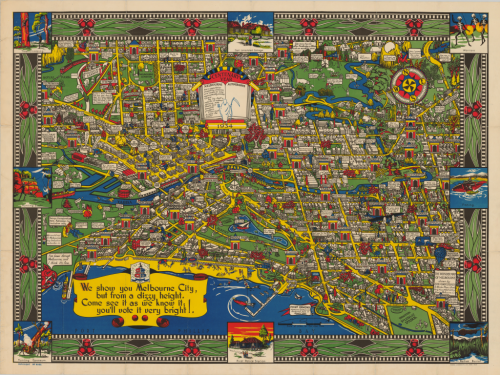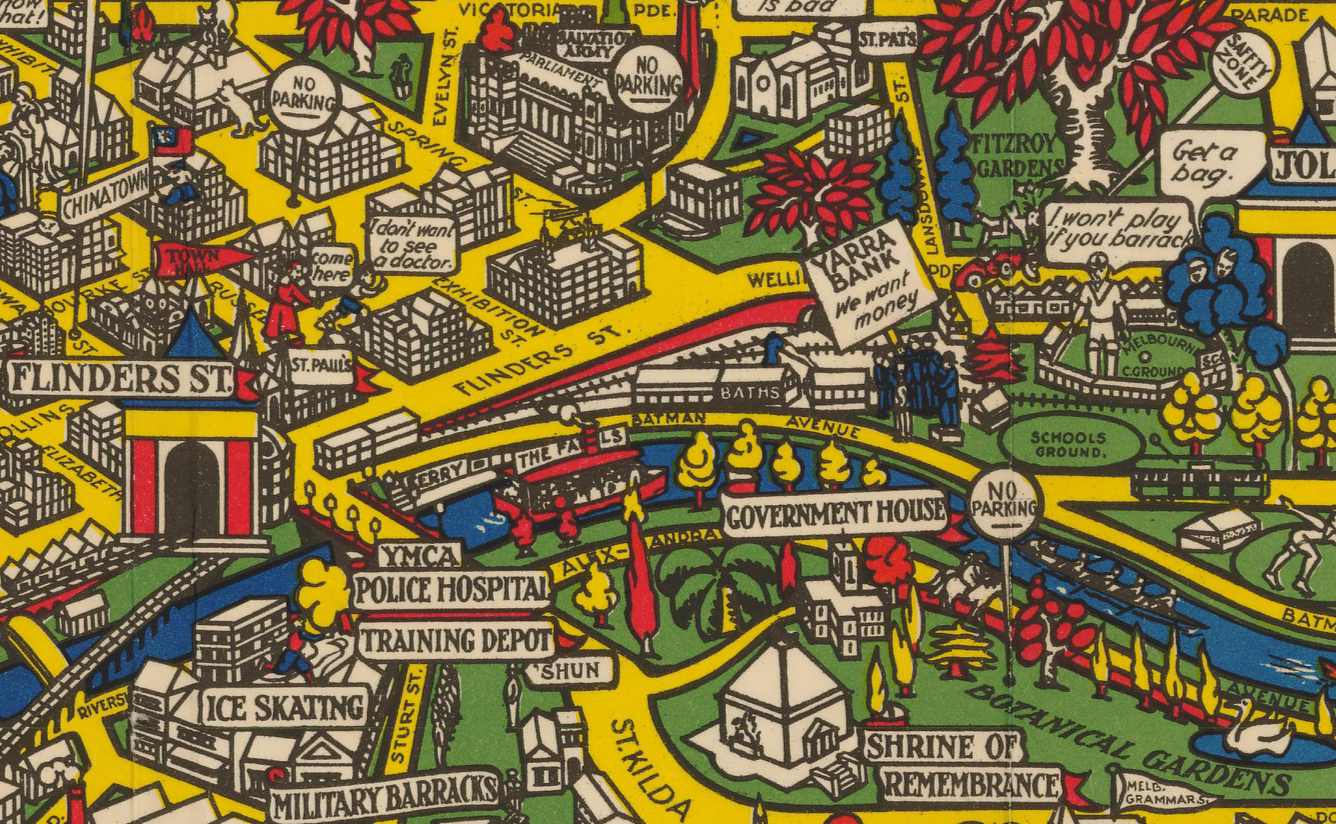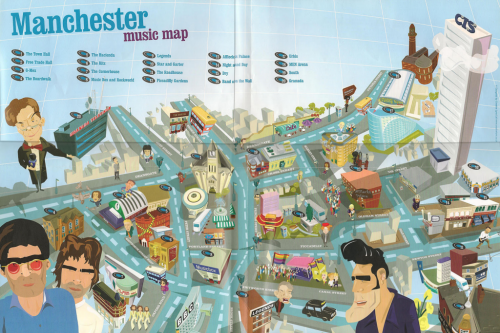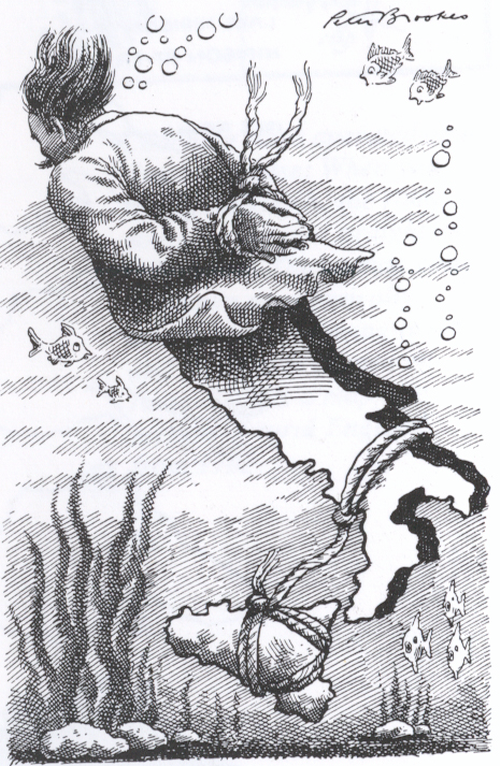 When mapping a specific theme it’s often useful to create the map to reflect that theme; to make the map speak to the mapped phenomena and attract the map viewer with an object that does justice to the content. There’s little point creating a map of Palm Springs Mid-Century Modern architectural heritage in some nonsensical gothic style. It just wouldn’t work and your map loses credibility. Here, Nat Reed has captured the spirit of the 20th century Desert Modernism that found its home in Palm Springs.
When mapping a specific theme it’s often useful to create the map to reflect that theme; to make the map speak to the mapped phenomena and attract the map viewer with an object that does justice to the content. There’s little point creating a map of Palm Springs Mid-Century Modern architectural heritage in some nonsensical gothic style. It just wouldn’t work and your map loses credibility. Here, Nat Reed has captured the spirit of the 20th century Desert Modernism that found its home in Palm Springs.
The use of glass, clean lines, the combination of natural and manmade resources and the focus on indoor/outdoor spaces is what characterised this particular design aesthetic with the backdrop of the stunning desert landscape. The affluent clientele were a perfect audience for these visionary architects to let their creative juices run wild and they created notable buildings of almost every type. Today, Palm Springs remains vibrant but lives off much of its historical vibe, including the architecture. Nat Reed’s map evokes that spirit and reflects the design ideals inherent in the architecture.
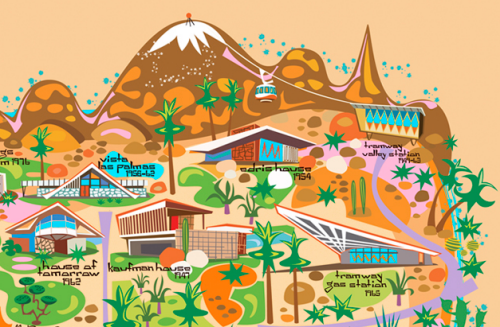 The map is heavily stylized in shape. Scale is abandoned and symbology is clean and angular (see the sun, cacti and big horn sheep for instance). The map captures the retro feel perfectly. Colours are bright and vibrant; the illustrations of the buildings cartoon-like yet also showing some of the essential character of each building. This is a fantasy map luring you to the fantasy land of Palm Springs and with at least an inspiration from early Disneyland maps. The grid structure of the streets holds the work together amongst the palm trees and other green foliage. There’s even an outer river or moat that seems to envelope Palm Springs making it appear even more like a fantastical island. With north to the right, the San Jacinto mountains are shown in aspect at the top of the map with the city laid out before them. The typographic elements are also in keeping with the overall theme.
The map is heavily stylized in shape. Scale is abandoned and symbology is clean and angular (see the sun, cacti and big horn sheep for instance). The map captures the retro feel perfectly. Colours are bright and vibrant; the illustrations of the buildings cartoon-like yet also showing some of the essential character of each building. This is a fantasy map luring you to the fantasy land of Palm Springs and with at least an inspiration from early Disneyland maps. The grid structure of the streets holds the work together amongst the palm trees and other green foliage. There’s even an outer river or moat that seems to envelope Palm Springs making it appear even more like a fantastical island. With north to the right, the San Jacinto mountains are shown in aspect at the top of the map with the city laid out before them. The typographic elements are also in keeping with the overall theme.
Here is a modernist map that creates a perfect cartographic link to the theme being mapped.
More details of Reed’s map and other prints on his web site here.

